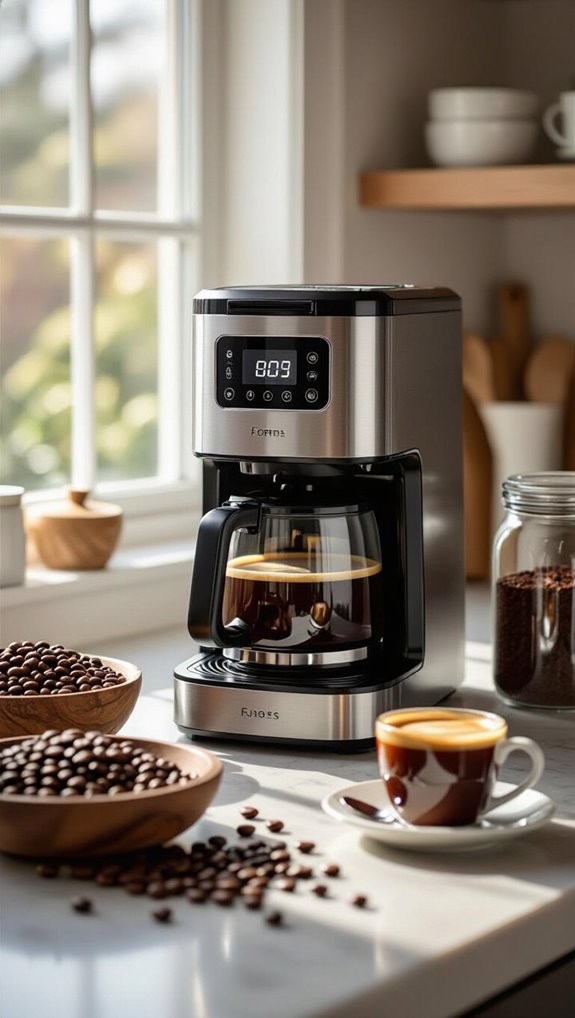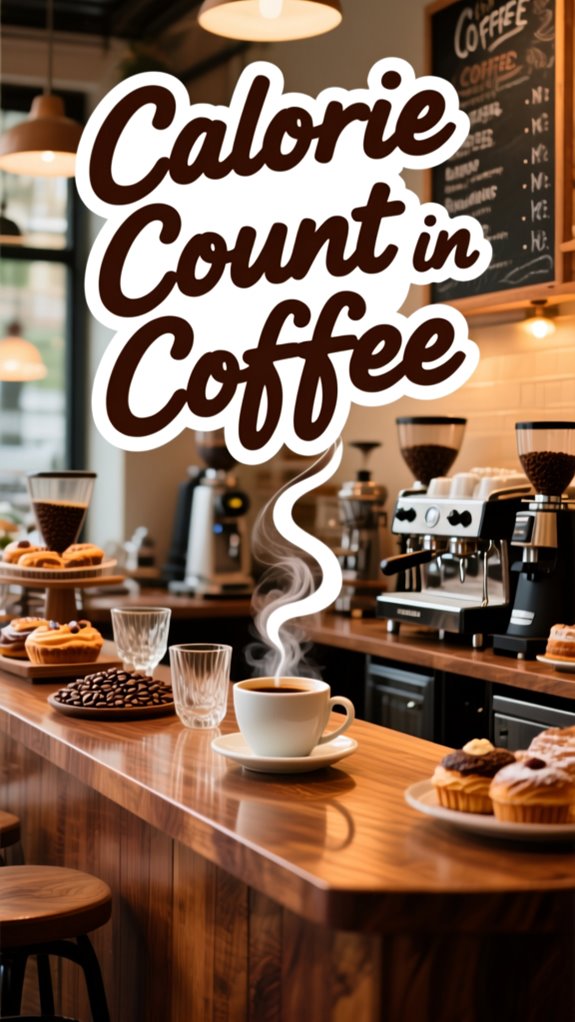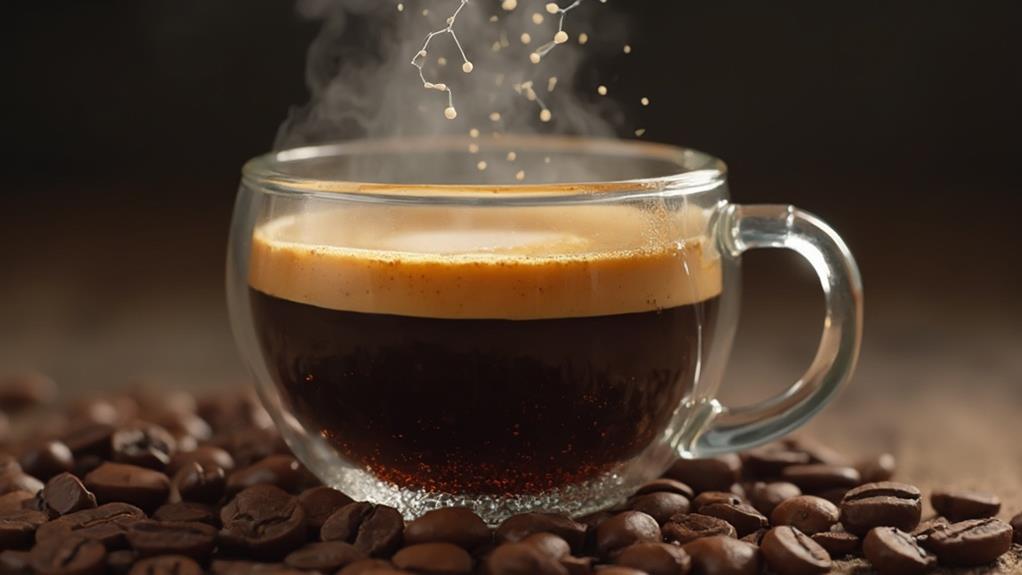Wondering how many calories are in your daily coffee? You’re not alone – this question comes up constantly among coffee lovers trying to manage their weight or simply stay aware of their daily intake. The truth is, plain black coffee contains virtually no calories, but the moment you start adding milk, sugar, syrups, or whipped cream, those numbers can skyrocket dramatically.
In this post, we’ll break down the exact calorie counts for every type of coffee drink you can think of, from your basic black brew to those elaborate specialty drinks. You’ll discover which coffee additions pack the biggest caloric punch, learn how to make lower-calorie swaps without sacrificing taste, and get the tools you need to make informed decisions about your coffee choices every single day.
Table of Contents
How Many Calories Are in Black Coffee
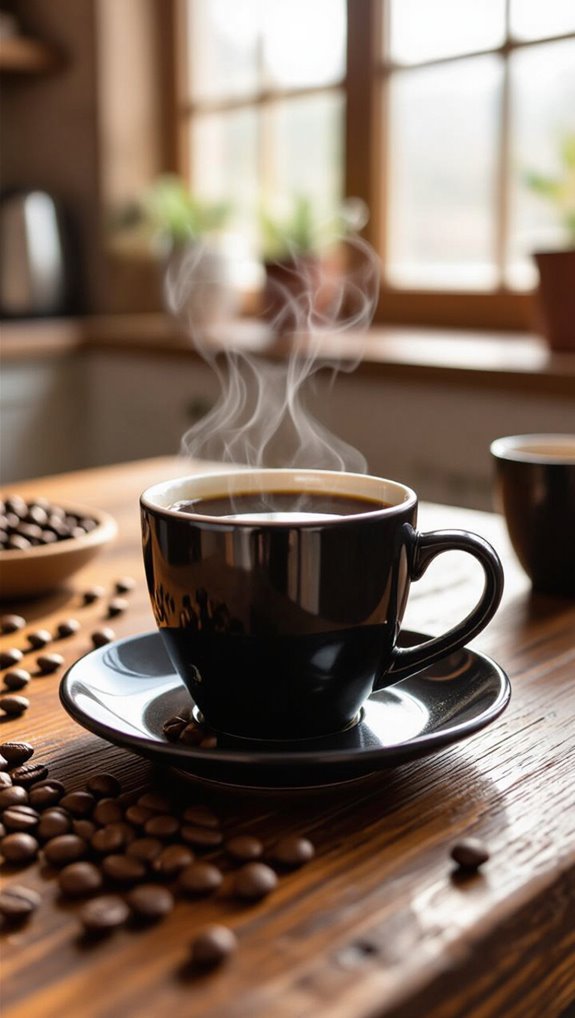
When you’re sipping a pure, unadulterated cup of black coffee, you’re enjoying one of the lowest-calorie beverages on the planet. An 8-ounce serving contains just 2 tiny calories, coming from trace protein and fat in coffee beans. Global coffee production from major countries like Brazil and Colombia ensures a consistent, low-calorie beverage enjoyed worldwide.
Whether it’s hot, iced, or espresso, the calorie count remains consistently minimal. Different brewing methods won’t significantly change this low-cal profile.
The beauty of black coffee? You’re getting a flavorful drink without dietary compromise. No sugar, no cream, no worries about sneaking in extra calories – just pure, rich coffee goodness that fits perfectly into any health-conscious diet.
Does Coffee Have Calories or Is It Zero
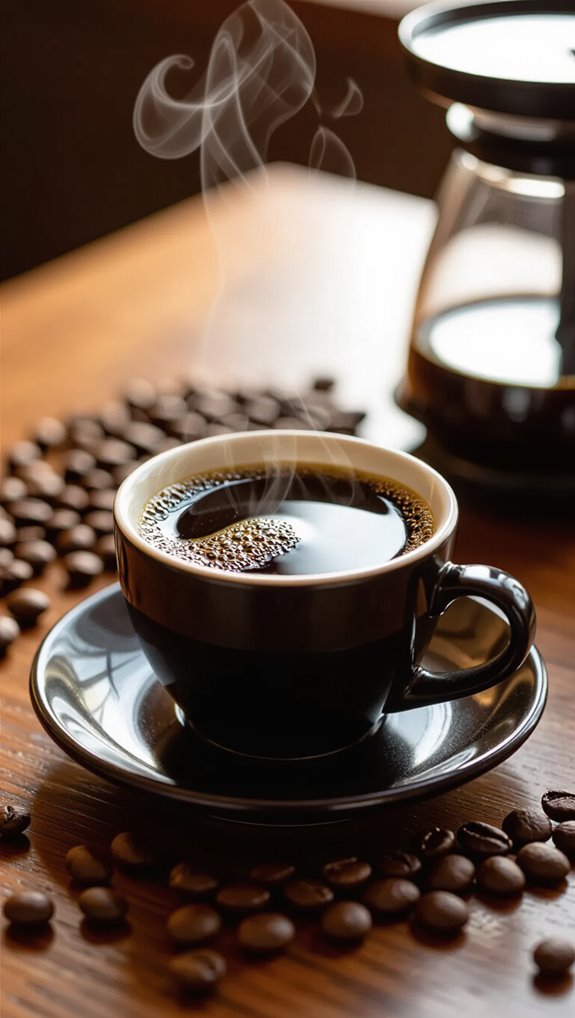
After exploring the minimal calories in black coffee, you might be wondering: does coffee actually have calories, or is it truly zero? Technically, coffee isn’t completely zero-calorie, but it’s so close that most nutritionists consider it calorie-free.
Plain black coffee contains about 2 calories per 8 oz cup, coming from microscopic traces of protein and fat. The negligible caloric content means you can enjoy your morning brew without worrying about significant energy intake.
However, be cautious—additives like milk, sugar, and flavored syrups can quickly transform your zero-calorie coffee into a calorie-dense beverage.
What Makes Your Coffee High in Calories
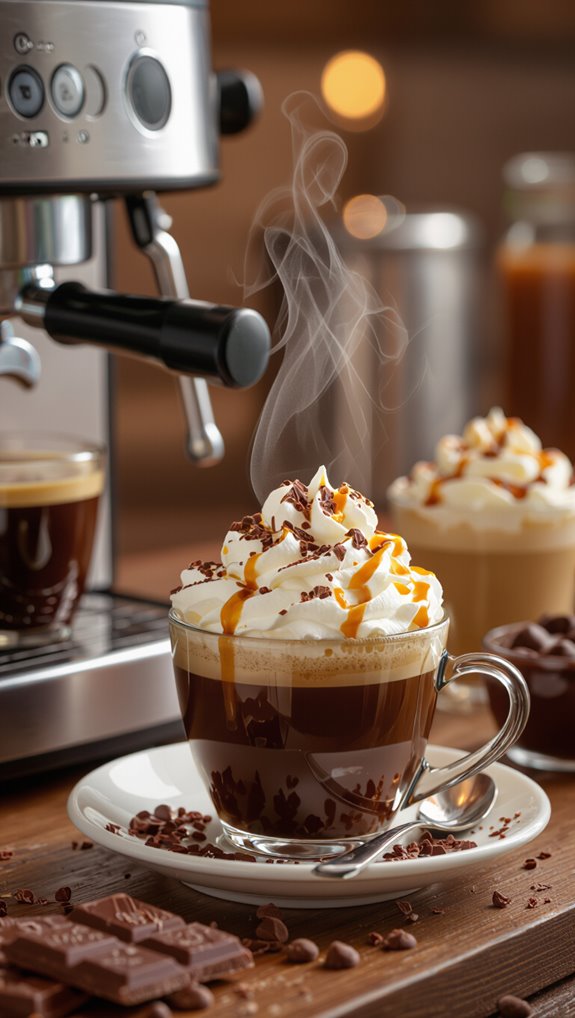
If you’re wondering why your seemingly innocent coffee can suddenly pack a caloric punch, it’s all about what you’re adding to that basic brew.
Milk, cream, sugar, and flavor syrups transform a 5-calorie black coffee into a potential 300-calorie dessert. A single pump of caramel syrup can add 50 calories, while two tablespoons of whipped cream contribute another 100.
Whole milk adds 10-20 calories per 100ml, and multiple extras compound quickly.
Your grande latte isn’t just coffee anymore—it’s a creamy, sweet calorie bomb that can derail your dietary goals before you’ve even finished your morning drink.
Calories in Popular Coffee Drinks and Beverages
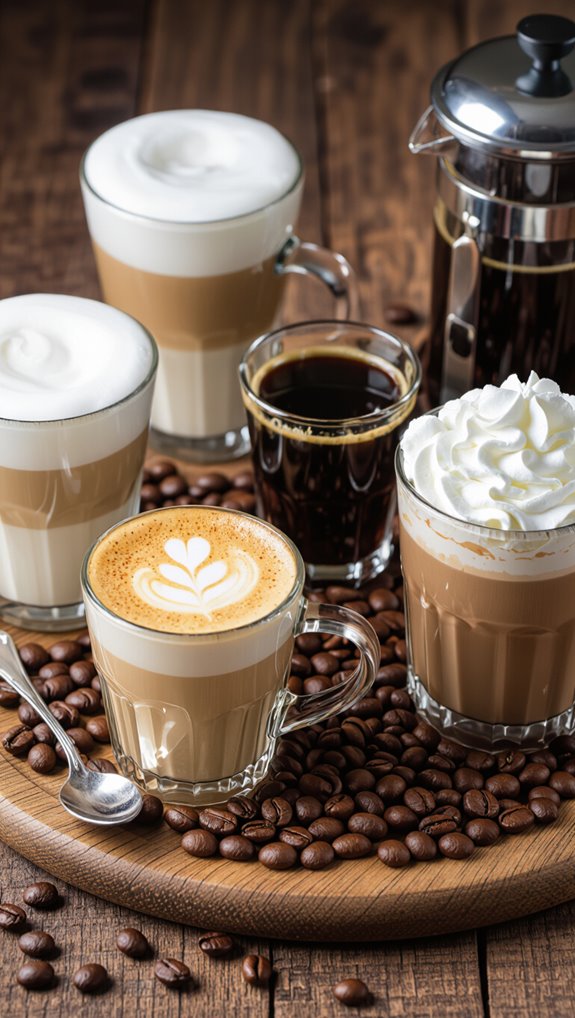
Curious about how many calories are hiding in your favorite coffee drinks? The calorie count can range dramatically from near-zero black coffee to over 1,000 calories in specialty chain beverages. Check out this breakdown of popular coffee drinks:
| Coffee Type | Calories (per serving) | Typical Size |
|---|---|---|
| Black Coffee | 1-5 | 8 oz |
| Latte | 150-200 | 250 ml |
| Mocha | ~300 | 250 ml |
| Caramel Iced Coffee | 100-150 | 200 ml |
| Specialty Drink | 500-1000 | Large |
Milk type, syrups, and added sweeteners significantly impact your coffee’s caloric content. Choose wisely to enjoy your brew without expanding your waistline!
How to Make Low Calorie Coffee at Home
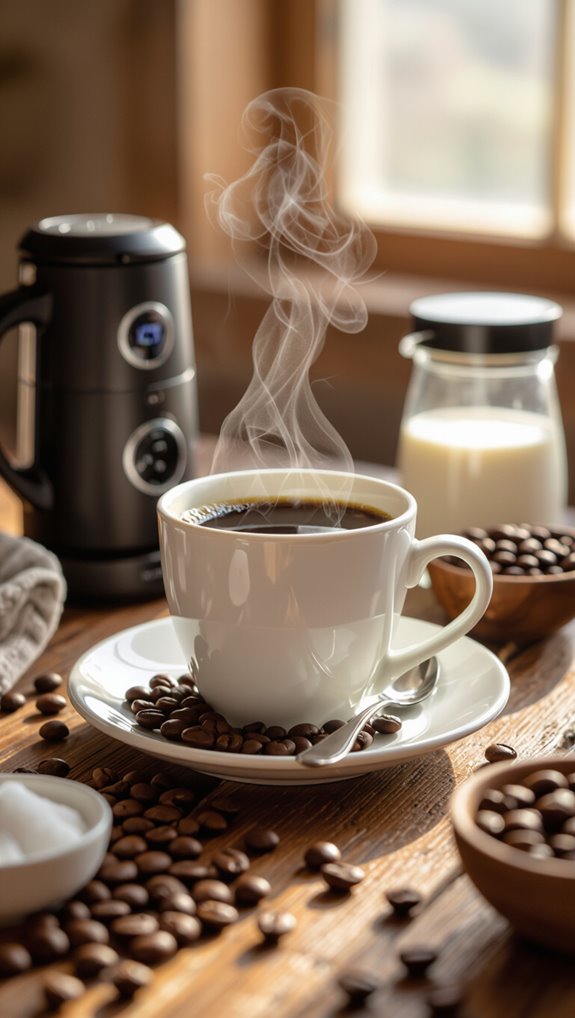
If you want to enjoy coffee without packing on unnecessary calories, choosing the right milk, selecting a smart sweetener, and controlling your portions are key strategies for creating a low-calorie brew at home. I’ll help you transform your daily coffee ritual into a calorie-conscious experience that doesn’t sacrifice flavor or satisfaction.
Choose Your Milk Type
When it comes to crafting a low-calorie coffee at home, the milk you choose can make or break your calorie count. Your milk selection dramatically impacts the final calorie content of your brew.
| Milk Type | Calories (per 100ml) | Best For |
|---|---|---|
| Skimmed | 8–19 | Weight watchers |
| Almond (unsweetened) | 5–10 | Lowest calories |
| Soy | 9–18 | Protein boost |
| Whole | 10–20 | Richest flavor |
Pro tip: Measure your milk carefully. Even a small extra splash can significantly increase calories. I recommend using a kitchen scale or measuring cup to keep your coffee lean and mean without sacrificing that creamy texture you love.
Pick the Right Sweetener
Let’s zero in on sweetening your coffee without breaking your calorie bank.
I recommend natural zero-calorie sweeteners like stevia, monk fruit, and erythritol. These options won’t spike your blood sugar and keep your coffee deliciously low-calorie.
If you’re watching your weight or managing diabetes, these sweeteners are game-changers.
Avoid artificial sweeteners with potential health risks, and steer clear of honey or maple syrup, which pack unnecessary calories.
For the healthiest cup, choose stevia or monk fruit. They’re FDA-approved, taste great, and won’t compromise your wellness goals.
Control Your Portions
Mastering portion control is the secret to crafting deliciously low-calorie coffee right in your own kitchen.
Measuring ingredients precisely helps you manage calorie intake without sacrificing flavor.
Use measuring cups to track cold brew concentrate, milk alternatives, and flavor enhancers like vanilla extract.
Key portion control tips:
- Use ½ cup cold brew
- Add ½ cup unsweetened nut milk
- Include 1 teaspoon vanilla
- Add ice for volume
- Customize to your calorie goals
Does Adding Milk to Coffee Increase Calories
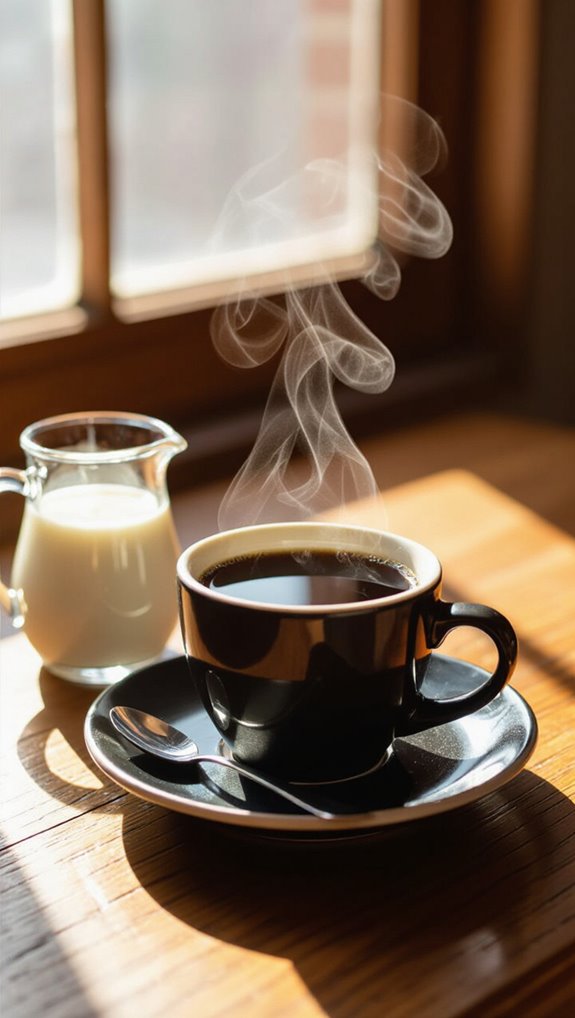
Adding milk to coffee definitely increases its calorie content, transforming a nearly zero-calorie beverage into a more substantial drink. Depending on your milk choice, those calories can climb quickly:
- Black coffee starts at just 2 calories per 100ml
- Whole milk adds about 50-60 calories per 100ml
- Different milk volumes dramatically change calorie count
A cappuccino with 170ml milk ranges from 68-150 calories, while a latte can hit 190 calories with whole milk. Your milk selection matters—skimmed milk keeps calories lower, while whole milk and some plant-based options like soy milk push the calorie count higher.
Choose wisely if you’re watching your intake.
Sugar vs Sweeteners in Your Daily Coffee
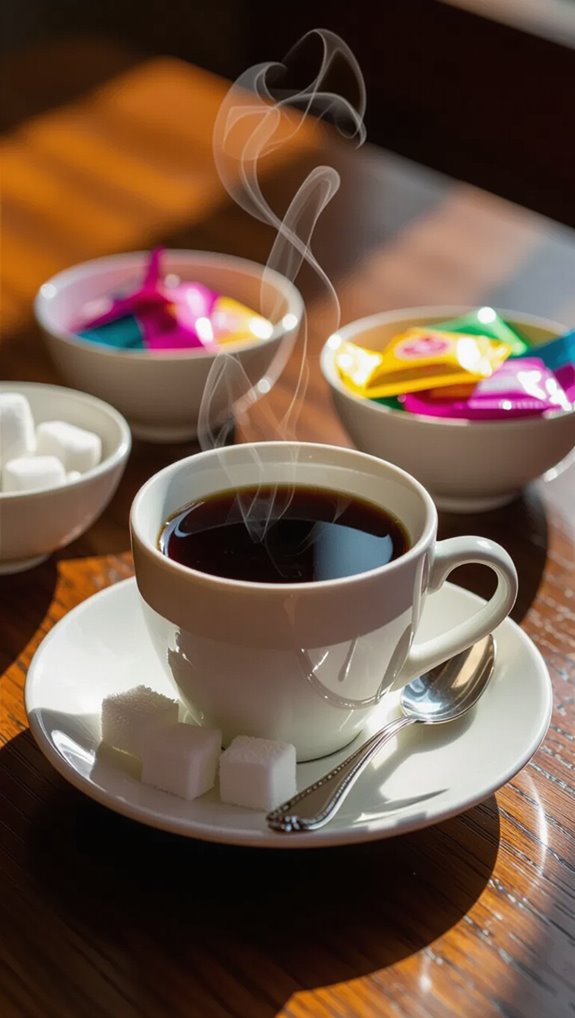
When it comes to sweetening your daily coffee, the choice between sugar and artificial sweeteners can significantly impact both flavor and calorie intake. Sugar adds about 16 calories per teaspoon and provides a natural sweetness, while artificial sweeteners like sucralose offer zero calories and are up to 600 times sweeter. Your preference depends on dietary goals and taste.
If you’re watching your weight, sweeteners might be the better choice. They don’t spike insulin and can help prevent weight gain. However, some people prefer sugar’s authentic taste and texture. Ultimately, moderation is key in your coffee routine.
Are Flavored Coffee Beans Higher in Calories
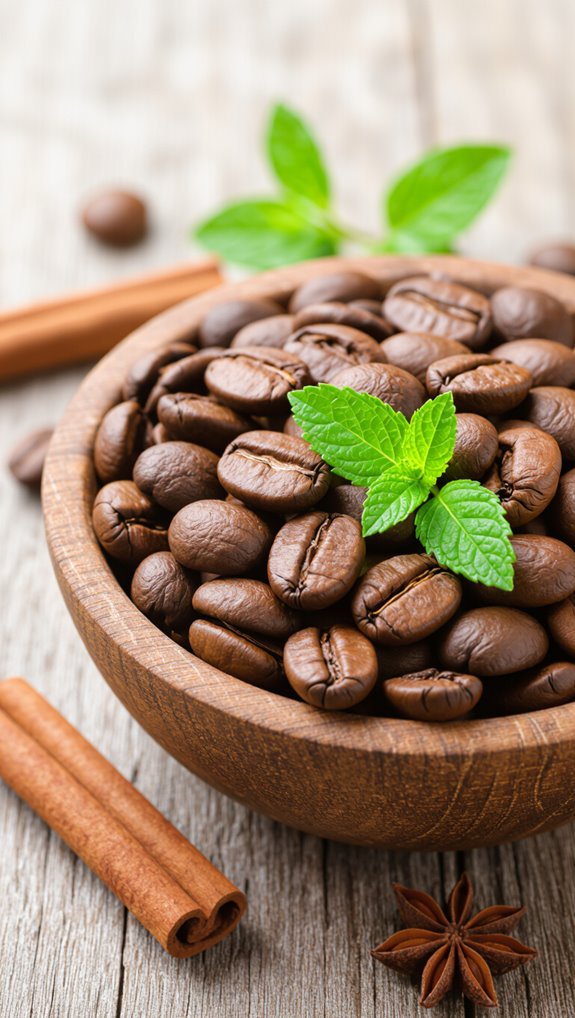
Flavored coffee beans typically don’t bump up your calorie count significantly, hovering around the same low-calorie range as traditional coffee. Here’s what you need to know about calories in flavored coffee:
- Natural and synthetic flavor extracts don’t add substantial calories during roasting
- A brewed cup maintains approximately 2 calories, just like standard coffee
- Additives like milk or sweeteners are the real calorie culprits
The flavoring process infuses beans with delicious taste without weight-gain worry. So go ahead and enjoy that vanilla or hazelnut brew – your diet won’t take a hit from the extra flavor.
The key is keeping additional ingredients minimal.
Keeping Your Coffee Low Calorie Every Day
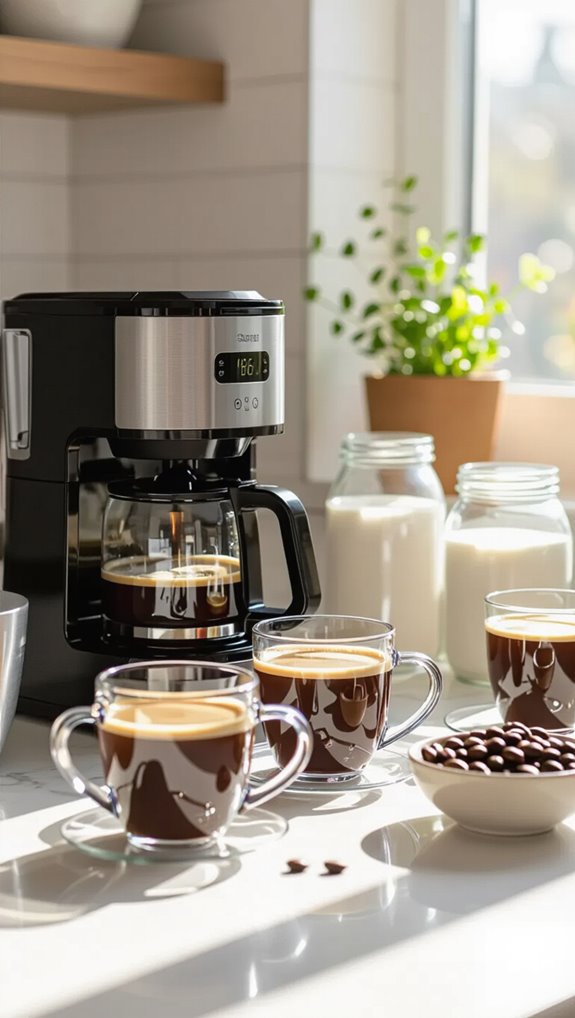
Strategically managing your daily coffee’s calorie content isn’t just possible—it’s surprisingly simple.
By choosing black coffee or espresso shots, you’ll keep calories near zero while enjoying rich flavor. Experiment with low-calorie enhancers like cinnamon, ginger, or sugar-free syrups to add variety without guilt. Swap whole milk for unsweetened almond milk, and try frothing alternatives for that creamy texture.
Homemade iced coffee with minimal ingredients beats high-calorie café versions every time. Small, mindful choices can transform your daily brew from a calorie bomb to a health-conscious ritual.
Frequently Asked Questions
Can I Drink Coffee While on a Diet?
Yes, you can drink coffee while dieting! I recommend sticking to black coffee or using low-calorie milk alternatives. Avoid sugary additions, and you’ll enjoy a zero-calorie boost that won’t derail your weight loss goals.
Does Espresso Have More Calories Than Drip Coffee?
No, espresso doesn’t have more calories than drip coffee. Ounce-for-ounce, espresso is slightly more calorie-dense, but in typical serving sizes, they’re nearly identical—about 2-5 calories each when served black.
Are Cold Brew Coffees Higher in Calories Than Hot Coffee?
Cold brew isn’t inherently higher in calories than hot coffee. They’re both essentially calorie-free when served plain. The calorie count depends on what you add—milk, sugar, or syrups will increase the total calories, regardless of brewing method.
How Many Calories Are in Decaf Coffee?
I’ll confirm decaf coffee is incredibly low in calories, typically just 0-2 calories per 8 fl oz serving. However, be careful with added milk, sugar, or syrups—these can quickly turn your zero-calorie drink into a calorie-dense beverage.
Can Coffee Actually Help With Weight Loss?
Yes, coffee can help with weight loss! Studies show it boosts metabolism, increases fat burning, and may lead to modest body fat reduction when combined with a healthy diet and regular exercise.
In Conclusion
Black coffee is essentially calorie-free, with just 1-5 calories per cup, making it an excellent choice for those watching their weight. But don’t be fooled – those fancy café drinks can quickly turn your morning brew into a calorie bomb. The answer to “how many calories are in coffee” really depends on what you add to it, with sugary syrups, whole milk, and whipped cream drastically increasing the calorie count.
By choosing smart additions like skim milk, zero-calorie sweeteners, and avoiding high-calorie extras, you’ll keep your coffee both delicious and diet-friendly. If you’re serious about enjoying great-tasting, low-calorie coffee at home, check out our coffee machine reviews to explore smart, well-reviewed options that can help you craft the perfect cup every time.
Stay informed, make conscious choices, and enjoy your coffee guilt-free knowing exactly what’s going into your daily brew.

